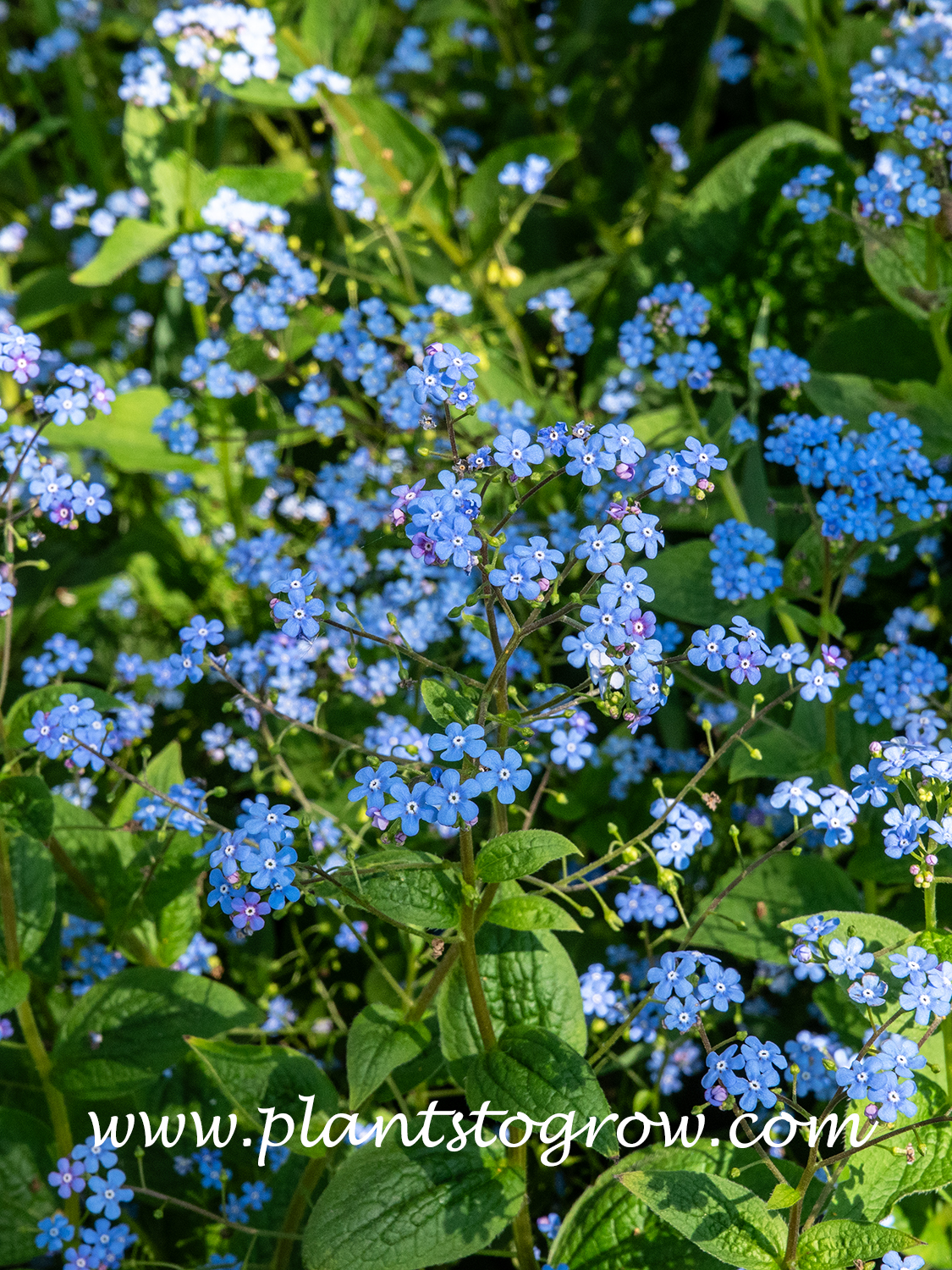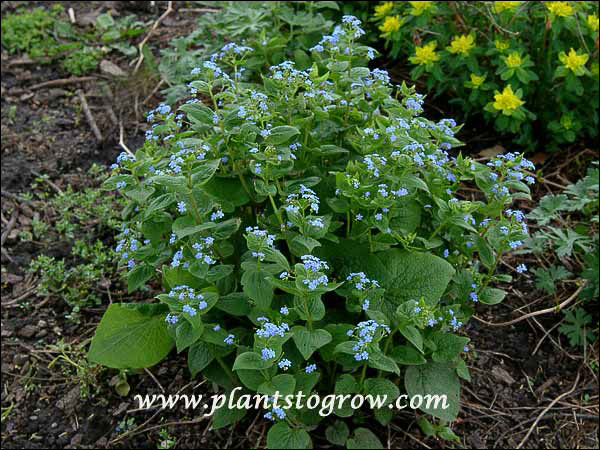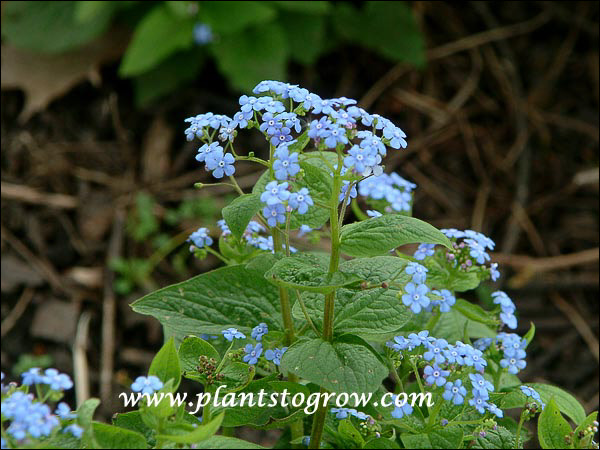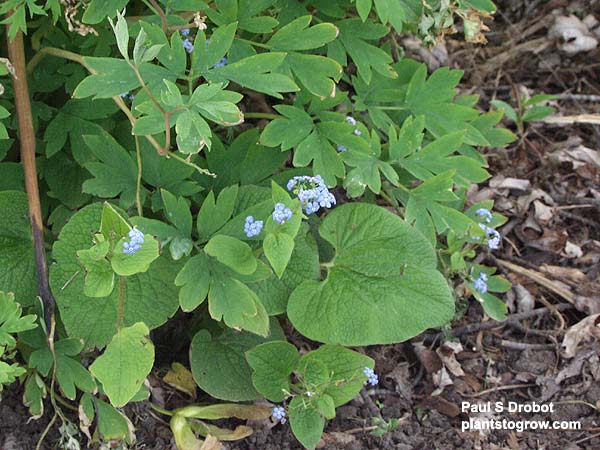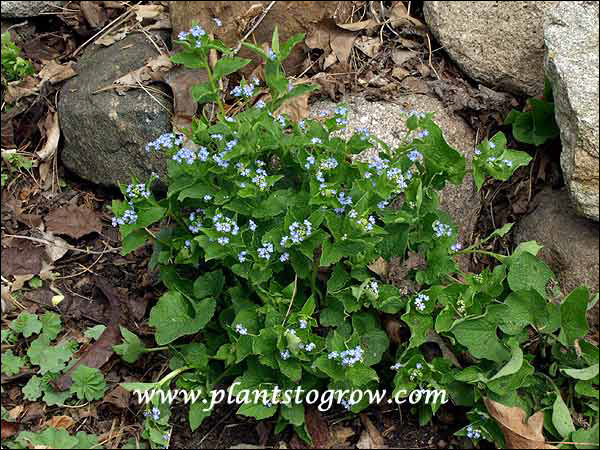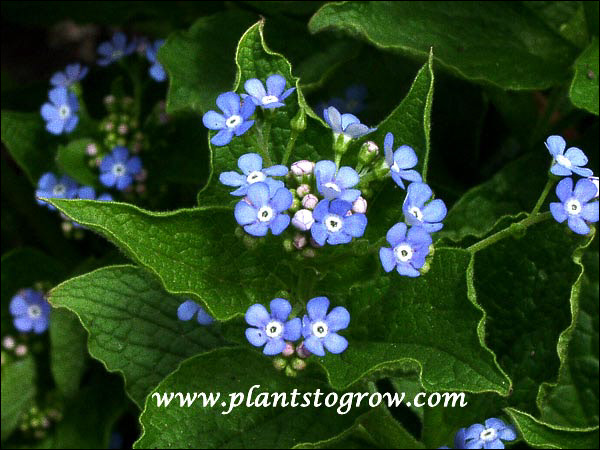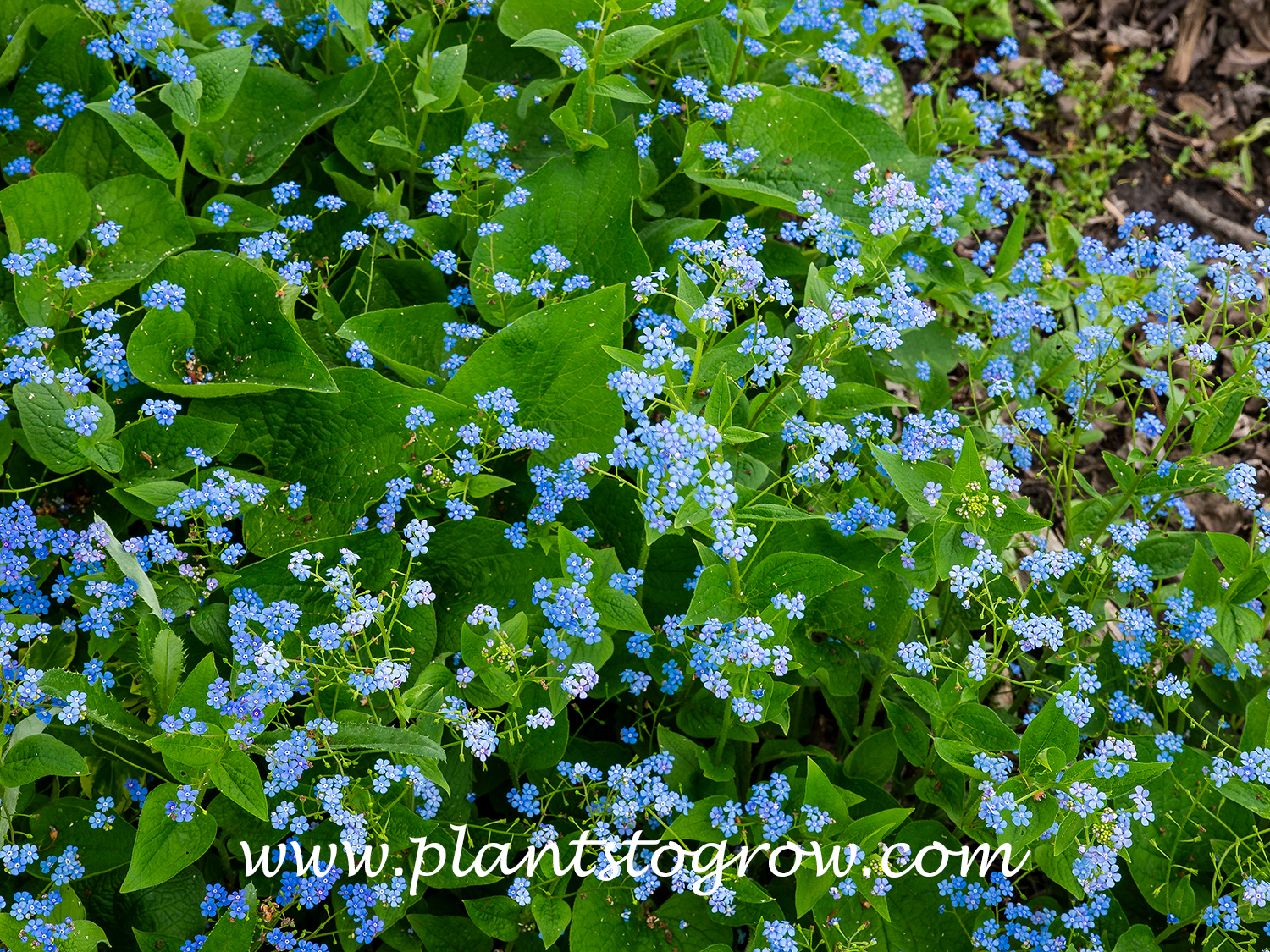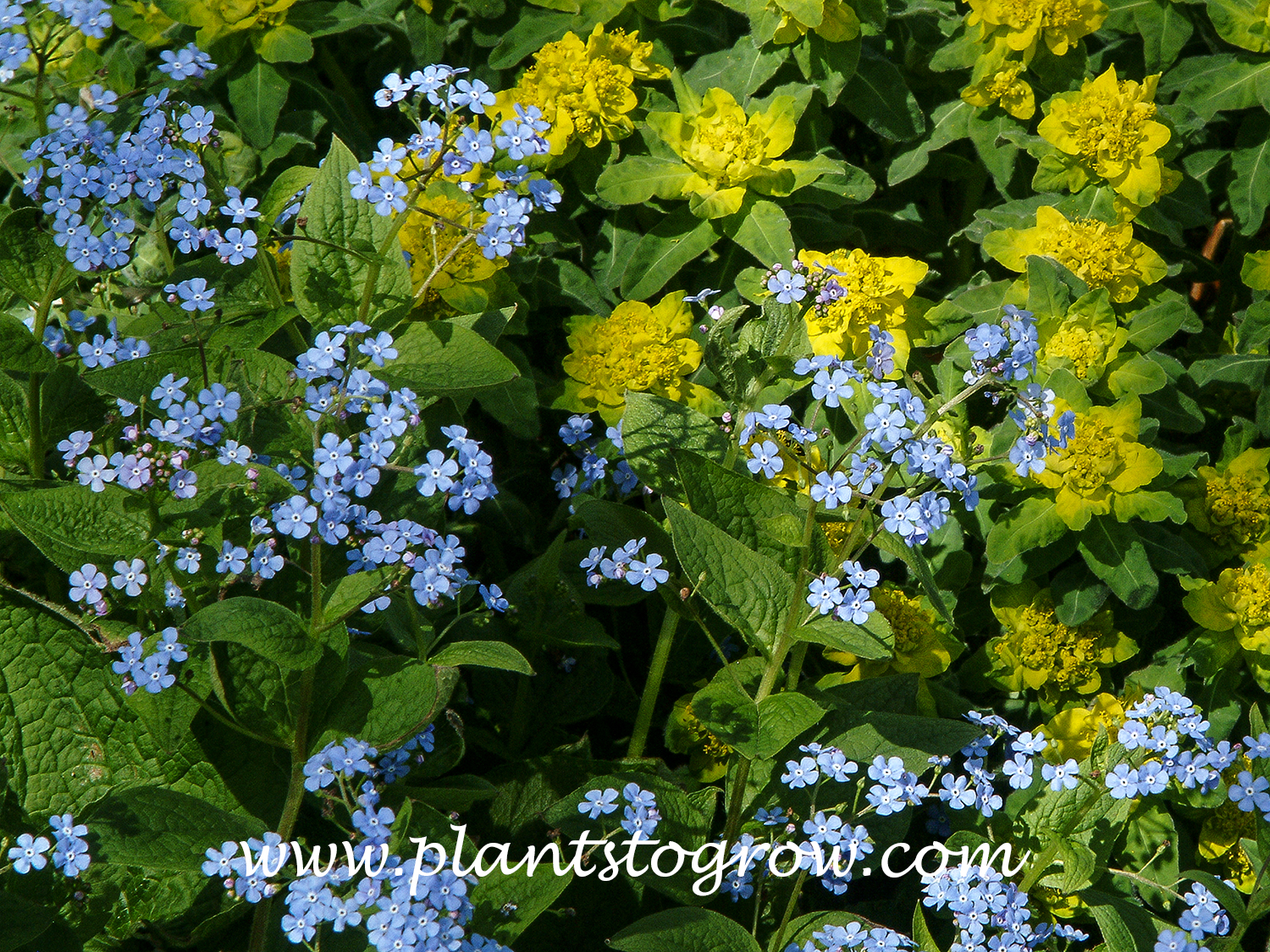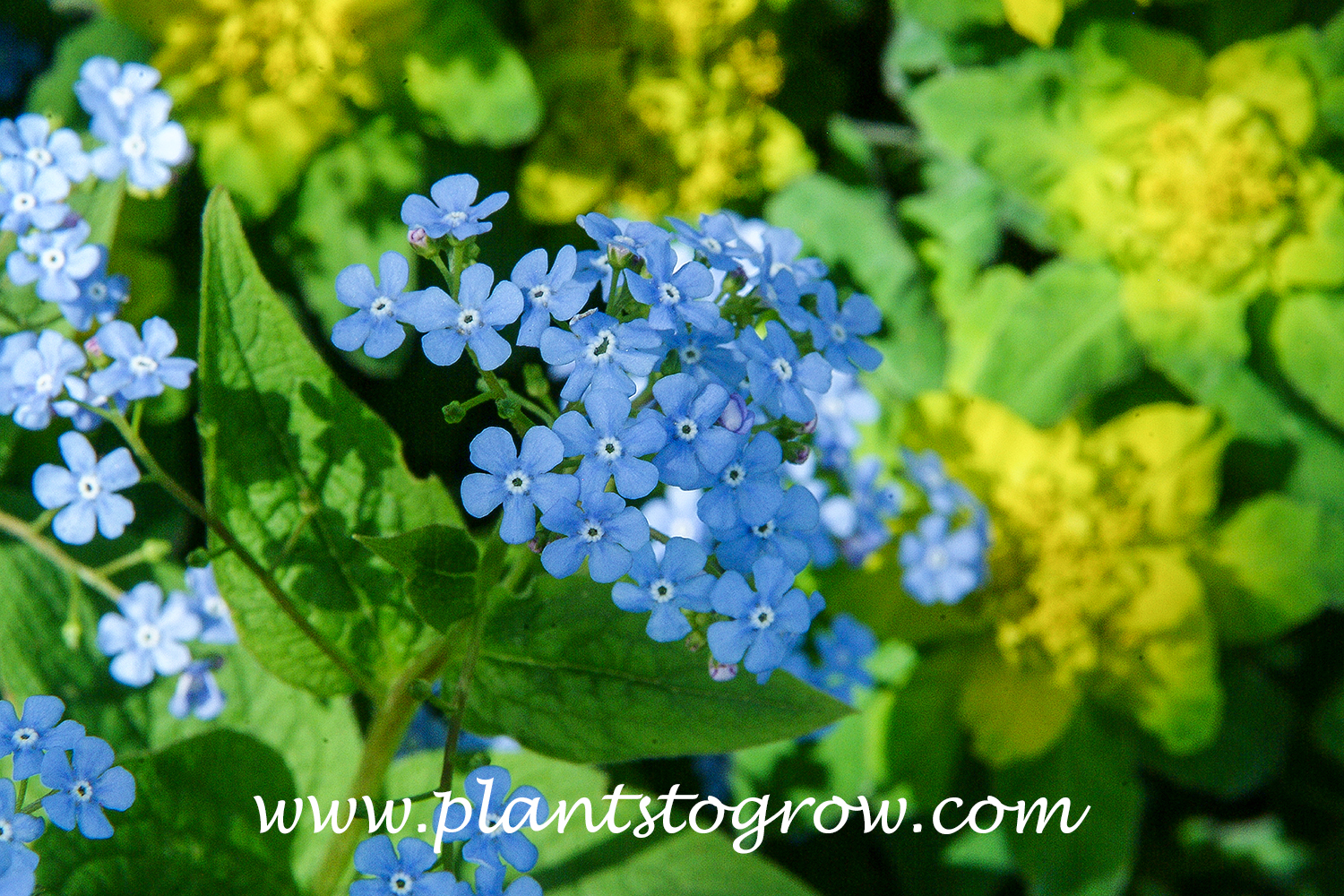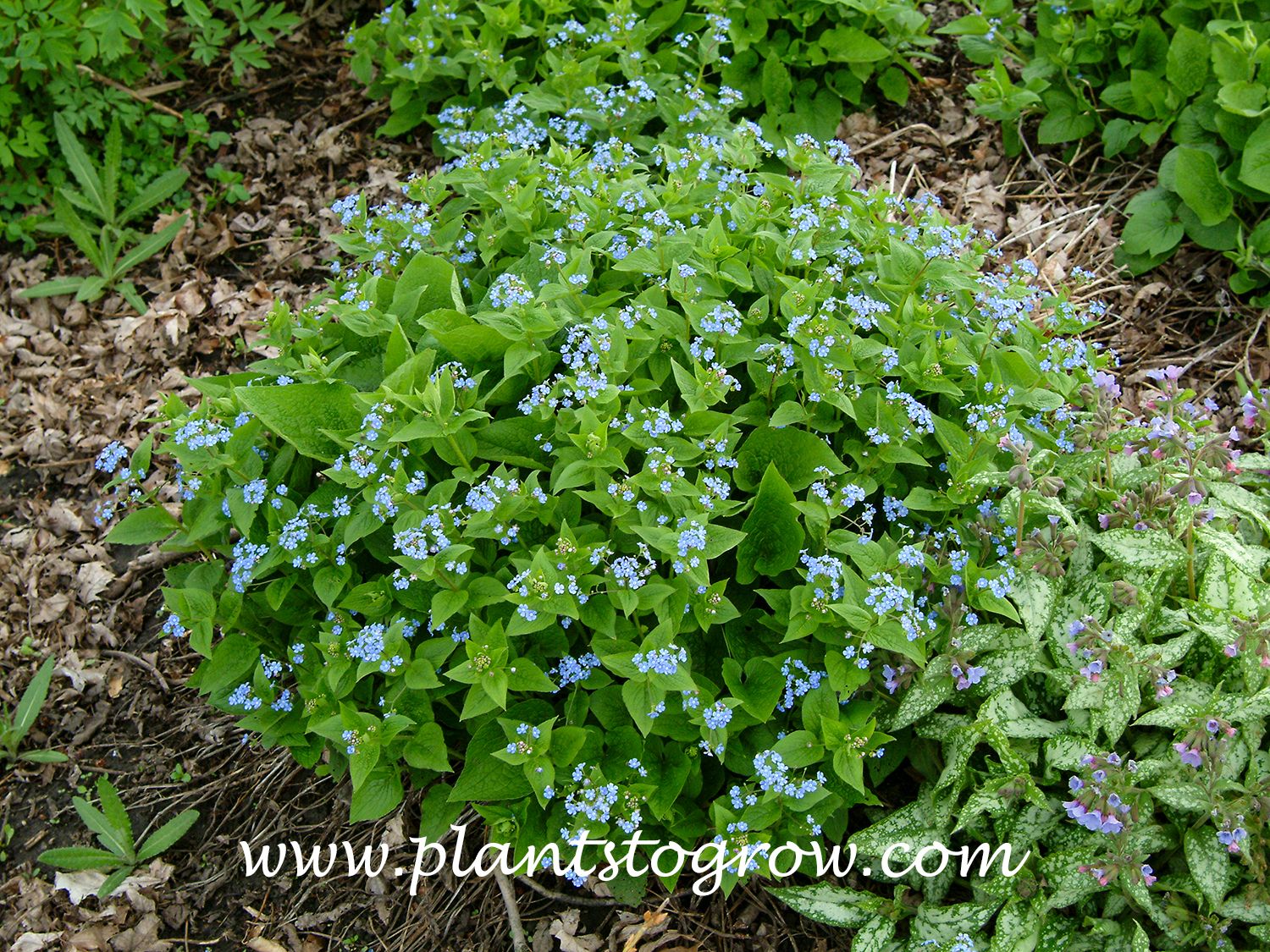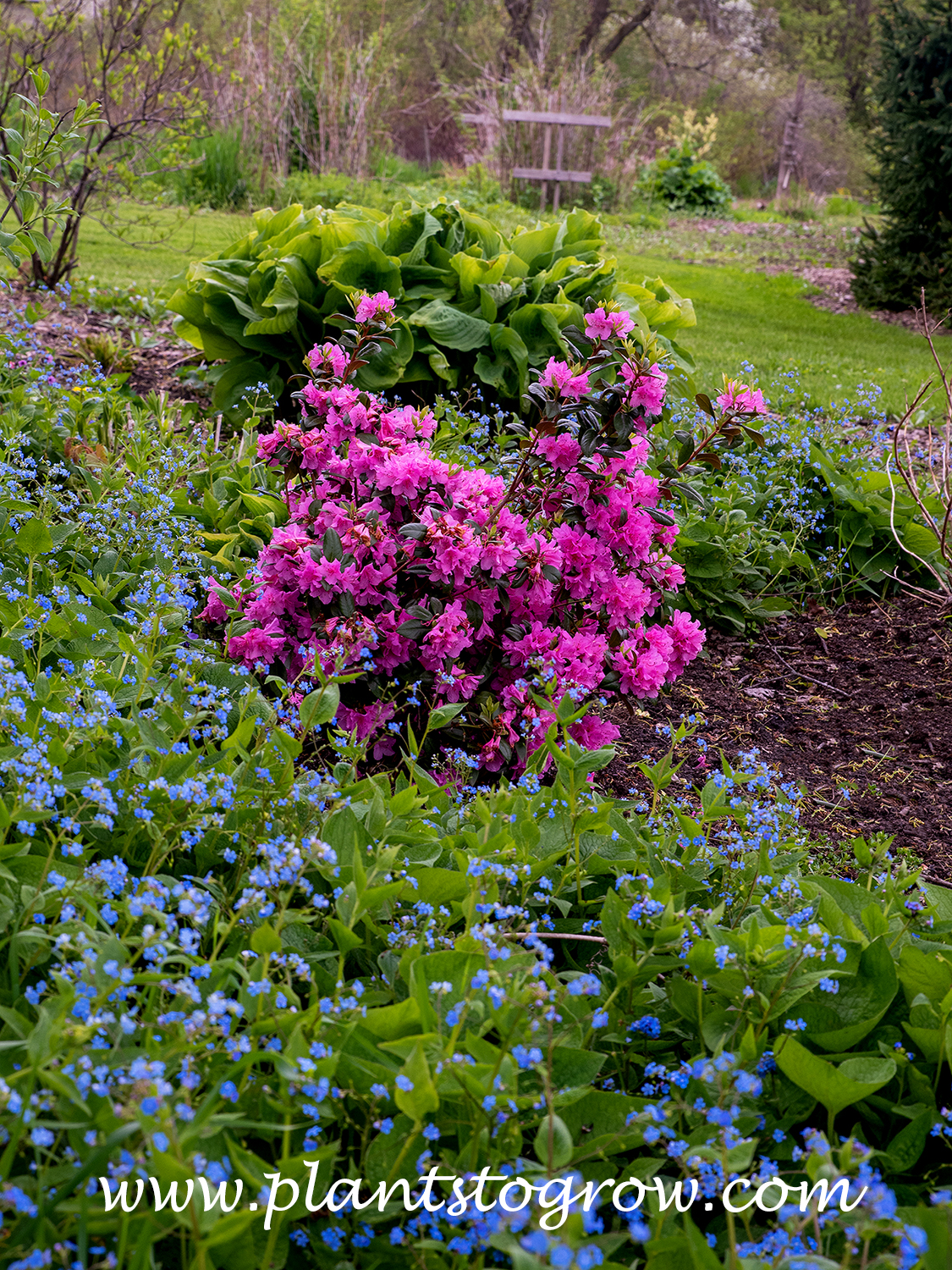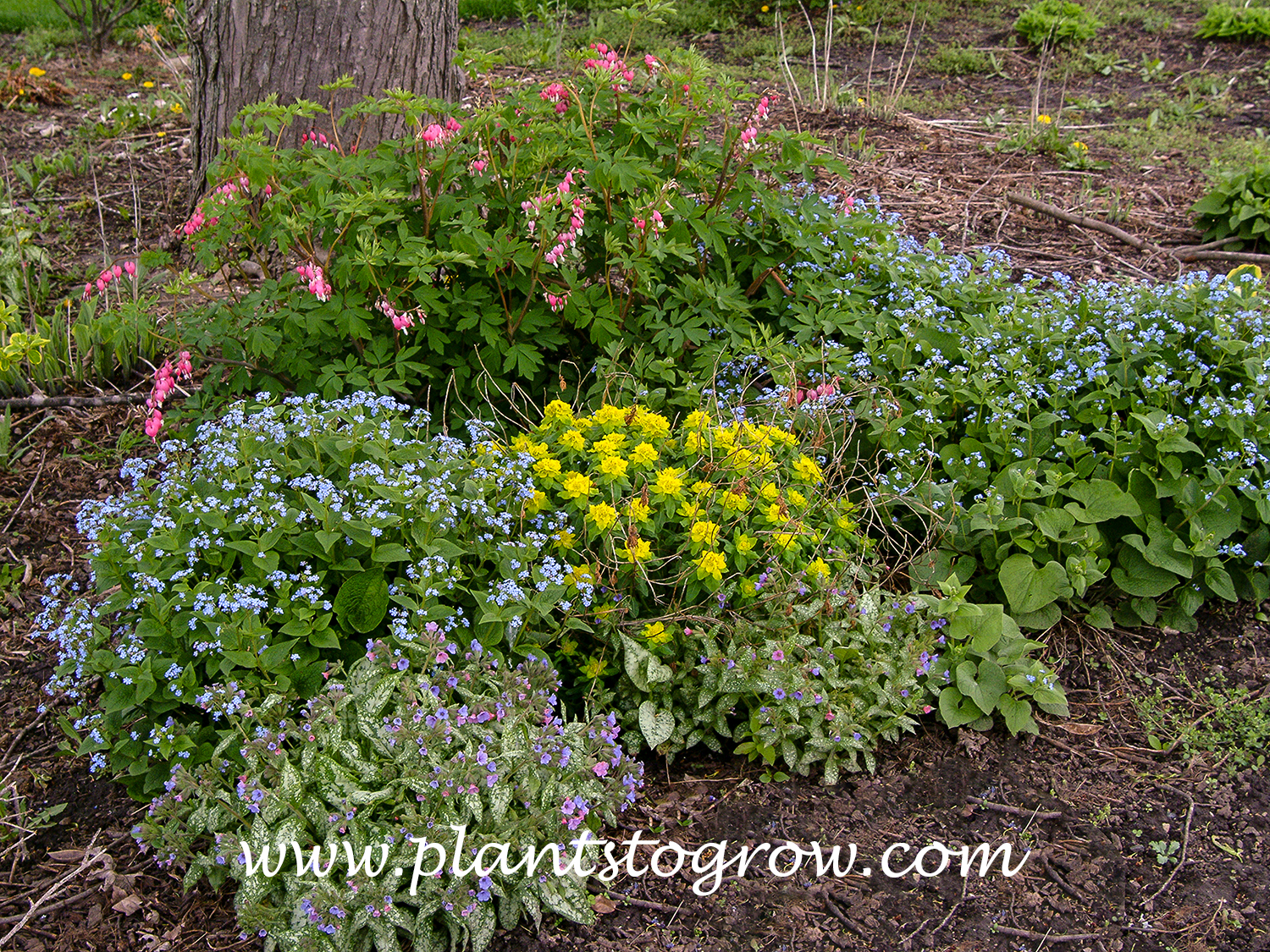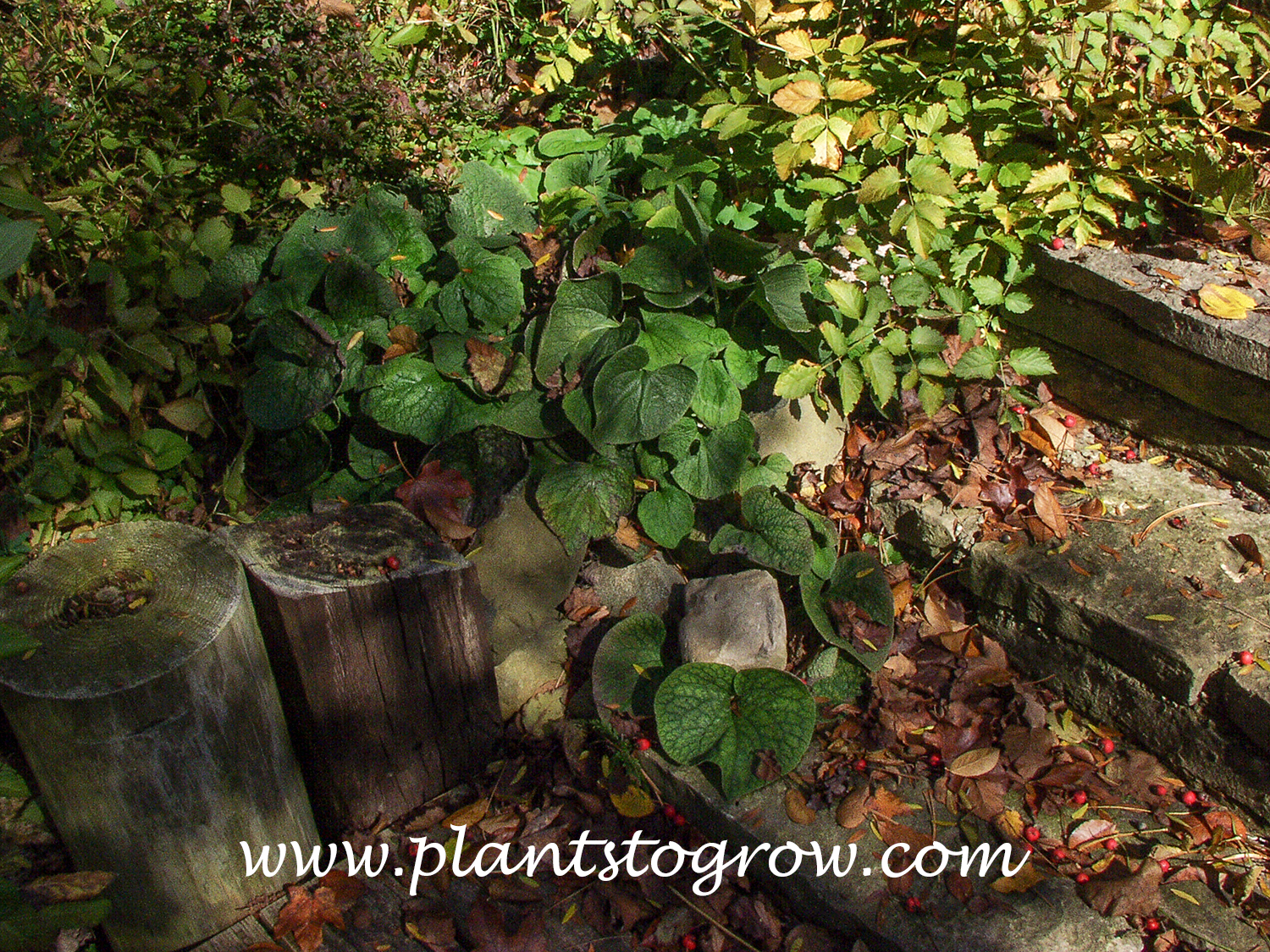| Description | Siberian Bugloss ABC's (Brunnera macrophylla) An aggressive plant with azure blue flowers. Flourishes in the moist shaded areas of the garden. Will rapidly reseed if the spot is suitable. |
|---|---|
| Pronunciation | (BRUN-a-ra)(mak-ro-FIL-a) |
| Plant Type | Perennials Hardy |
| Hardiness Zone | 3-7 |
| Sunlight | morning sun, shade |
| Moisture | Likes moist areas, tolerates average, doesn't like dry. |
| Soil & Site | average to moist |
| Flowers | Small 1/4" in diameter azure blue flowers, five petals with a white eye, start blooming at the end of April to early May for around a month, branched flower clusters seem to float above the plant. |
| Leaves | Green, large, basil heart-shaped leaves have a sandpaper texture. |
| Stems | rhizomatous |
| Dimensions | 12-16" tall by 12-16" spread, mounding, very aggressive grower, it will spread everywhere by seeds |
| Maintenance | This fast growing plant will choke out less aggressive plants. Will readily reseed itself around the garden. |
| Propagation | division, seeds and root cuttings |
| Native Site | western Siberia and eastern Europe |
| Misc Facts | Named for Samuel Brunner (1790-1844), a Swiss botanist. Bugloss comes from the Greek word ox tongue, probably because of the roughness and shape of the leaves. SYN: Anchusa myosotidiflora), AKA: False For Get Me Not, Heartleaf Brunnera, |
| Author's Notes | I enjoy the dainty blue flowers of this plant against the dark green back ground of the large leaves. A good plant to naturalize an area. Blooms the same time as Bleeding Hearts and Cushion Spurge for some nice combinations. |
| Notes & Reference | #04-Herbaceous Perennial Plants (Allan Armitage), #06-Perennials for the American Gardens (Ruth Rodgers Clausen and Nicolas H Ekstrom), #274-Site Authors' observations and growing experiences of Brunnera |

Cart
